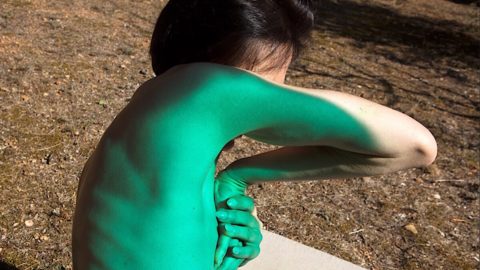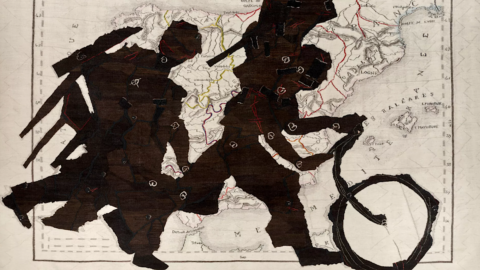A relatively unknown work of Helmut Newton is the series of images he made of the dancers of the Monte Carlo Ballet. Taken over many years, the photos were intended for print in the theater's program booklets and special publications, and Newton magnified just a few of the reasons for including them in his exhibitions. His series is the starting point and the fulcrum of this collective exhibition open until 20 September at the Foundation. Slipping into the shoes of a theater director, he accompanied the dancers through the streets of Monaco, on the steps behind the famous casino, near a theater emergency exit, or naked in his own home. With Les Ballets de Monte Carlo, he thus reinterprets a compositional idea that has come to define his work.
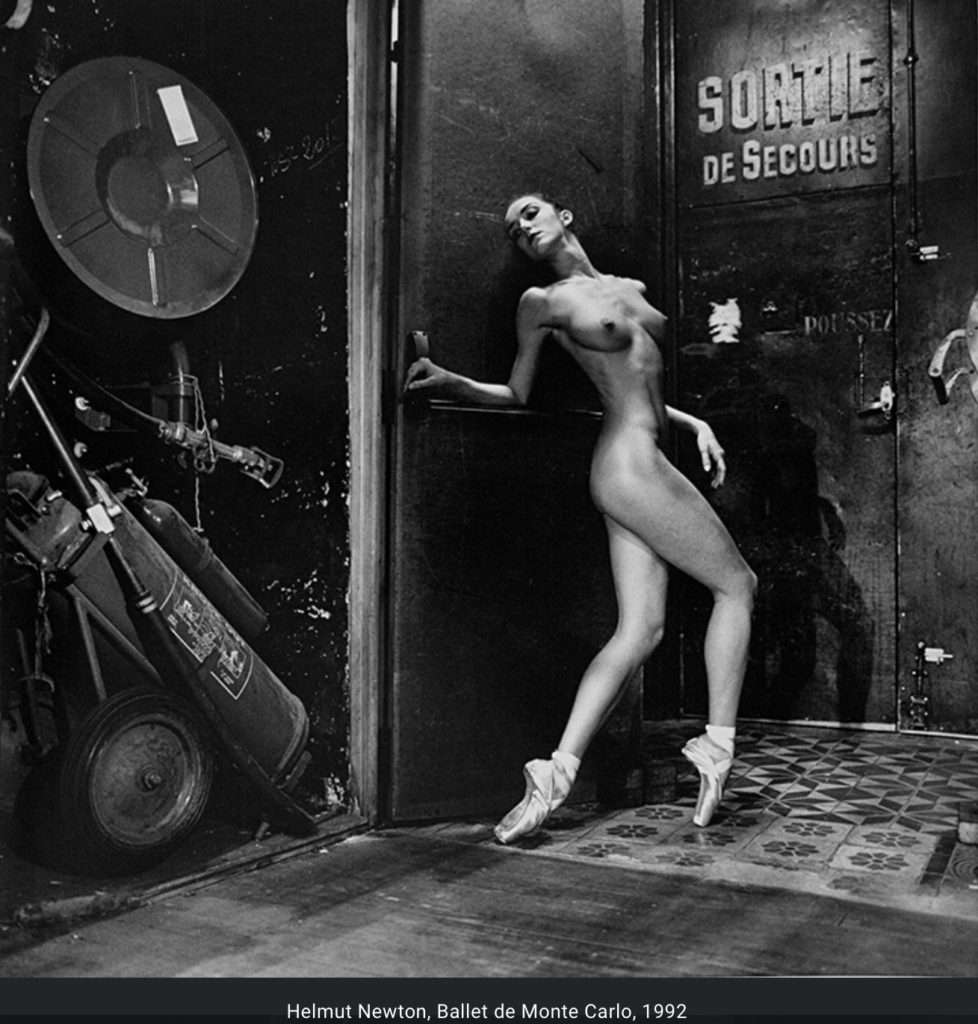
We also encounter this connection in the work of Bernd Uhlig, who has been photographically accompanying the choreographies of Sasha Waltz for many years. These have not only been performed in classical theaters, but also in renowned museums in Berlin and Rome, among others, sometimes take place in their staircases. In the collaboration of Bernd Uhlig and Sasha Waltz, a truly fleeting art form and its visual materialization find a congenial connection, in which the focus is on the concentration of the actors and dream or trance states. While Uhlig's earlier (analogue) work used longer exposures to capture motion resulting in motion trails, here he shows us close-ups of frozen gestures on one side and the entire stage choreography captured in split seconds on the other .
Vanessa Beecroft presents nude or clothed women in elaborate tableaux vivants, often performed in galleries or museums, usually as public events. The women, often a few dozen, are arranged in a sort of formation and during the actions that last for hours their movements take place in slow motion. In reality, almost nothing happens during the minimalist choreography. Beecroft photographically documents this state of stillness in motion, and the numerous images of the performance transport the process into the static image. Here we see her performance VB55, presented at the Neue Nationalgalerie in Berlin in 2005, as life-size photographs. Beecroft identifies with her protagonists: they become a multiple alter ego, of which she demands only a natural facial expression and an equally natural posture.
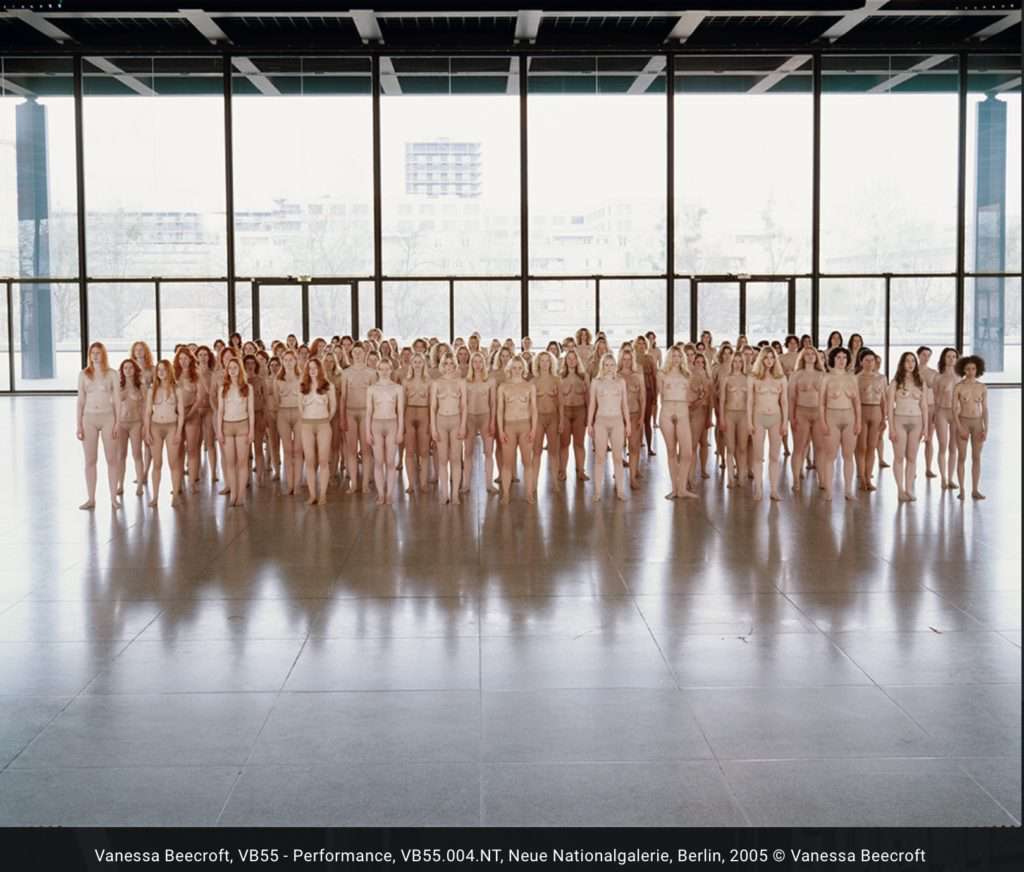
In his 1976 multi-part series Viva España, Jürgen Klauke allowed only two people to interact: a man and a woman engaged in a mysterious dance on a dark stage. Typical of some Spanish and South American dances, this dance is also imbued with a touch of seduction or eroticism. Of the two protagonists, we only see their anonymous bodies: while the man remains standing, the woman turns or lets herself be turned around him, upside down. Watching the sequence in succession, however, gives the illusion of movement. Klauke allows the clothed and semi-clothed bodies of man and woman to seemingly merge into each other. In doing so, he blurs the line between feminine and masculine, which he also similarly did in numerous self-portraits that he took of himself around the same time.
Erwin Wurm takes Klauke a step further in terms of absurd humor, when he asks people for a mini performance on camera. For his One Minute Sculptures, people interact with objects to transform the street and various interiors into a stage. Wurm devises curious poses or absurd contortions for collaborators, provides clear and simple directions, thus giving the signal to translate the performative action back into static photographs. Attempts to lie down on narrow surfaces, to pin one's head to a wall, or to balance two cups on one's feet in the air while lying on a back, are not always successful. Obviously, anyone who lets himself be drawn into this unusual artistic experiment must confront his physical limits and his modesty limits.
For years Barbara Probst has been surprising viewers with her playfully experimental blend of classic street photography, portraiture, still life and, more recently, fashion. She organizes her photographs of her into diptychs, triptychs, and occasionally into wall-sized tableaux made up of a dozen individual images. They always have the same title – Exhibitions – and are distinguished by an image number together with the location and date of filming. The date is indicated to the exact day and minute. She photographs the same situation with several cameras from different angles simultaneously, triggered at exactly the same time by radio waves. The multiple simultaneous perspectives captured by the cameras are then flattened, so to speak, once they are hung on the walls of the exhibition space.
Viviane Sassen also works primarily with the human body. She sometimes catches him in extreme contortions for her experimental fashion images of her. She choreographs and stages the bodies of her models in unexpected ways, for example coloring their skin or depicting them obscured by shadow, mirrored, superimposed by objects and often abstract by cropping or framing the images. She occasionally reverses the generally valid order of up and down, which results in a sense of disorientation for the viewer. Sassen challenges us as viewers and raises questions about commonplace platitudes. As a former model, she knows both sides, in front of and behind the camera. As she once stated in an interview, it is through her photographic works of hers that she has been able to claim power over her own body.
Since the 90s, Inez and Vinoodh have been irritating the fashion world since the 90s with surreal images. Their techniques include digital image manipulation, which they use to blend the bodies of men and women. Inez and Vinoodh not only push the boundaries of common ways of representation but also the limits of reality. At other times, they radically altered or combined the genders and skin colors of their protagonists. As such, their images embody the transgression of boundaries, and this links them to Newton's earlier strategy of questioning 'good taste' and subtly but intentionally challenging it visually 'from within the system'. Likewise, they shoot magazine editorials and work directly with a number of well-known designers and count among the most influential contemporary photographers with their iconic images.
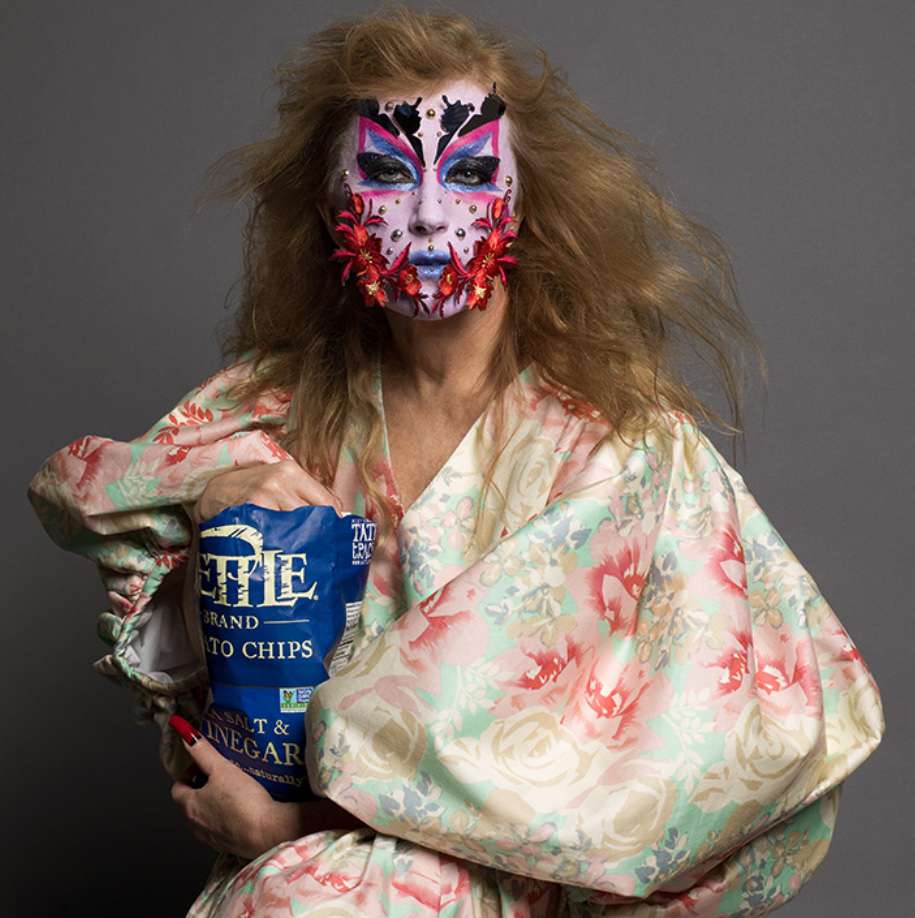
We also encounter a sense of ambiguity in Cindy Sherman's work. In her first small-format black and white series Untitled Film Stills from the end of the 70s, she plays ever new roles as an actress. Although they seem like unspectacular observations from everyday life, they are actually deliberately staged, with the artist as the main character. Sherman continued the role-playing idea in her work, later masquerading behind thick layers of makeup and wigs, masks or breast implants in her untitled, colorful self-portraits from the year 2000. Her plays of transformation, camouflaging, and the representation naturally includes many cinematic references: some portraits have the explicit feel of film stills, with an aging actress acting in a film that has yet to be made.
Yang Fudong's black-and-white photography is also inspired by the film medium, especially film noir of the 60s and even earlier Shanghai films. Fudong seems to recall a timeless past with his nude photographs tinged with melancholy; even in his films we encounter narratives that are similarly imbued with a sense of mystery. Such an open display of nudity is still considered a provocation in much of Chinese society today. In Fudong's New Women series, one or more naked women sit or stand in a sparse but luxurious studio set. The female models – both in the still images and in the film – are reminiscent of Brassaï's portraits of prostitutes from 30s Paris, which were an important source of inspiration for Newton's later ambivalent fashion photography. The Body Performance exhibition thus comes full circle through a myriad of approaches across different cultures and times.
It was in the 70s that Robert Longo shot his Men in the Cities photographic sequence on the roof of a skyscraper in New York City, which he later reinterpreted as large format charcoal drawings. In these images we see people captured by the camera in unnatural poses. They appear to dance wildly or reproduce scenes from American Westerns, warfare, or gangster films, such as when someone appears to fall into a hail of imaginary bullets. Indeed, it was such a film from Fassbinder's 1970 The American Soldier that inspired Longo to create this series of performative images. On the roof of his loft, his models dodge objects swinging or thrown at them, while Longo photographs them falling to the ground or lying twisted.
Robert Mapplethorpe, on the other hand, only choreographed one person in the image presented here: former world champion bodybuilder, Lisa Lyon, who referred to herself as a sculptor of her own body. We see her lying naked on a boulder in California's Joshua Tree National Park in 1980. The hard surface of the rock contrasts with her soft skin, while her massive strength matches Lyon's muscular legs. In this unconventional outdoor setting, Mapplethorpe presents us with a ballet-like choreography. Everything can become a stage: an interaction between seeing and being seen. Around the same time, Newton worked with Lyons in California and Paris. With this “strong woman” in the truest sense of the word, another circle closes in the current Body Performance exhibition.
In this exhibition, we encounter role-playing and physical transformation as contemporary photographic perspectives on the most diverse visual aspects of the body and movement. As we look at these images, questions emerge about how we are perceived by others and by ourselves, by identity and by the collective.
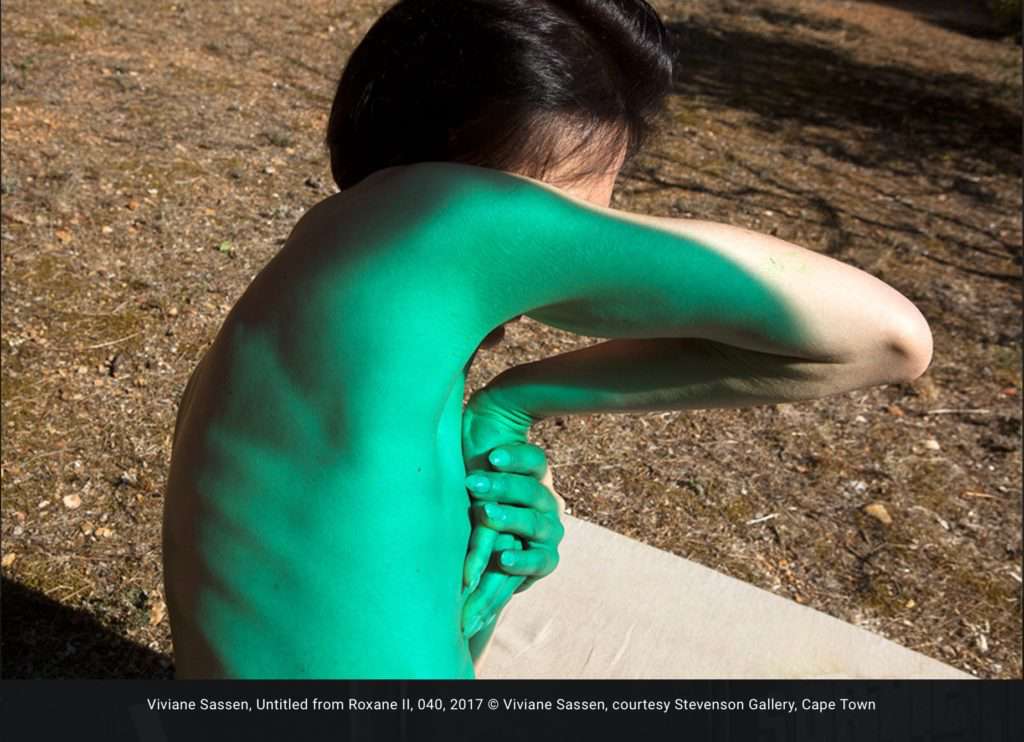
Source: Helmut Newton FOUNDATION

